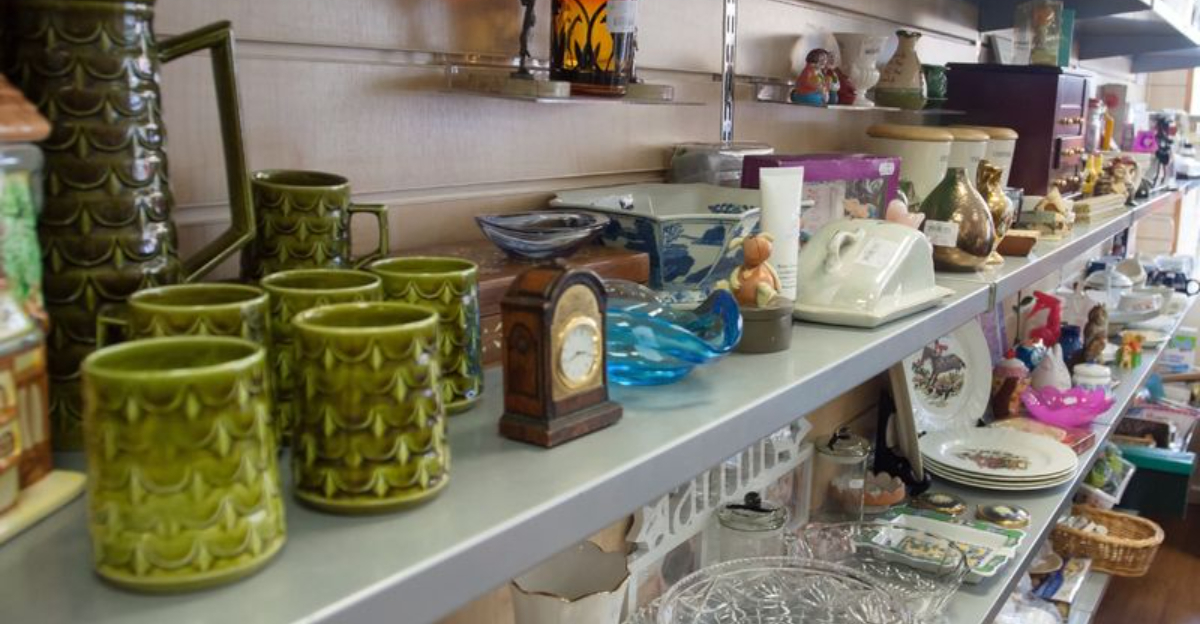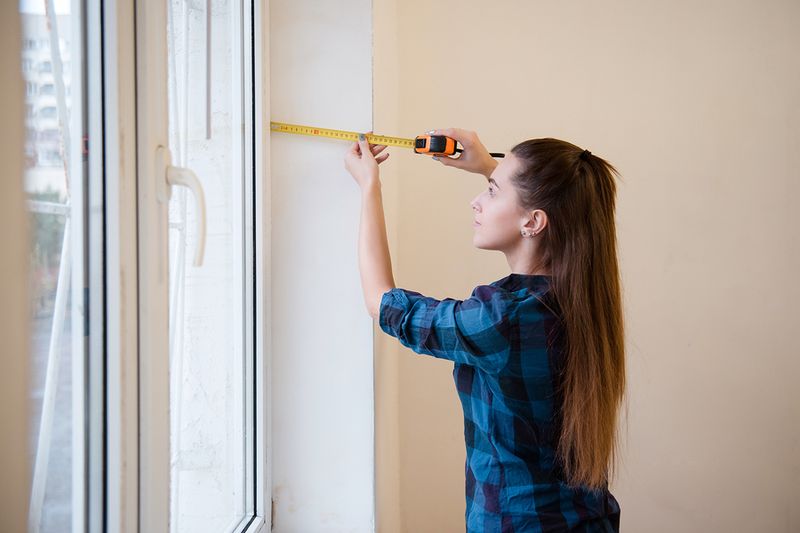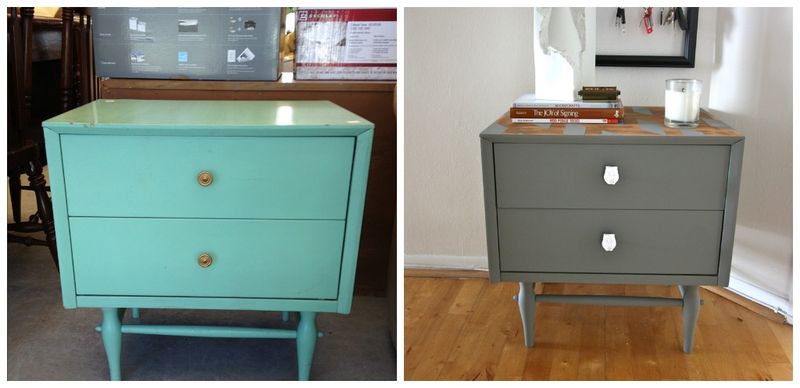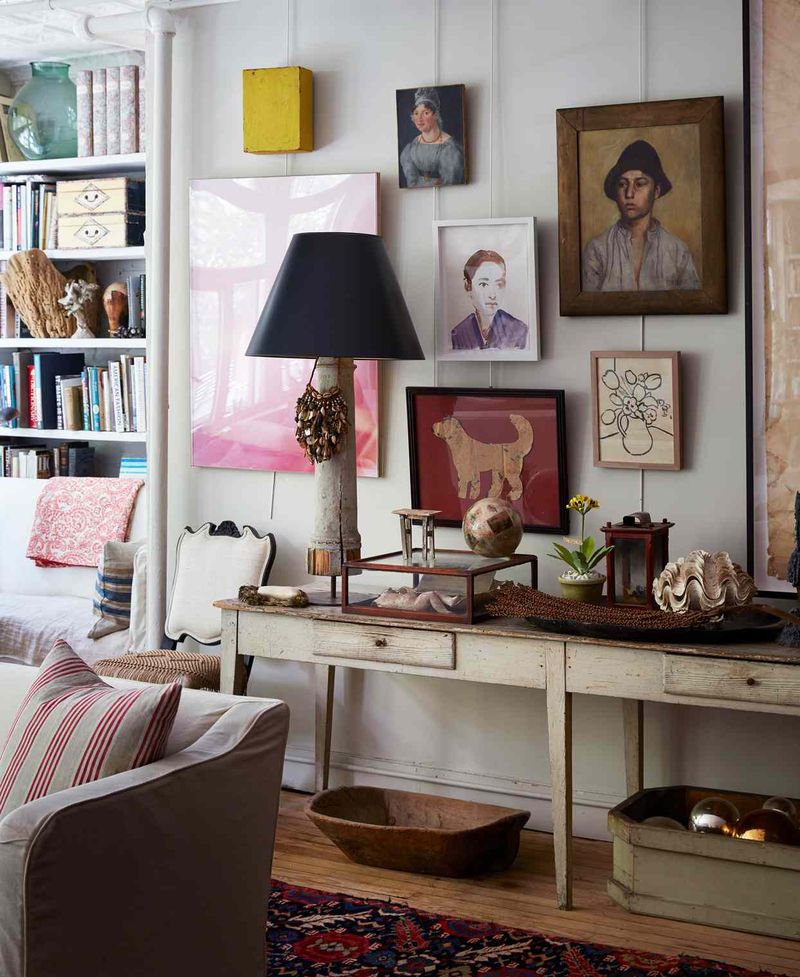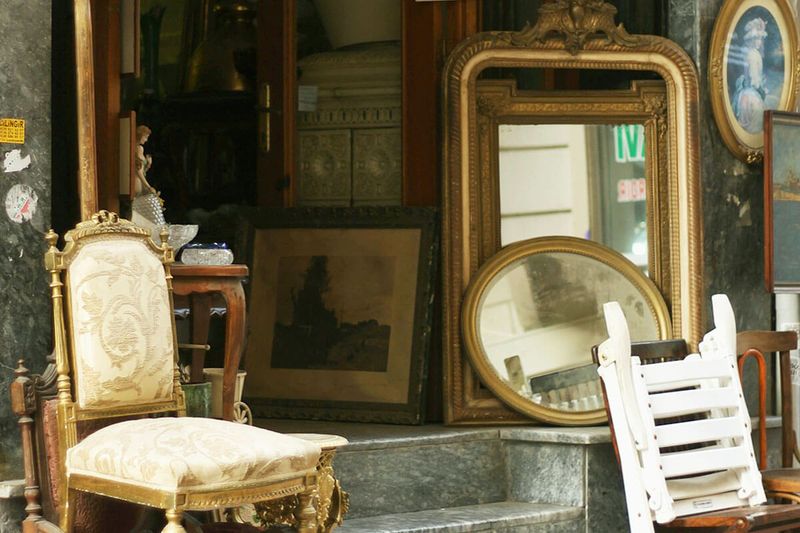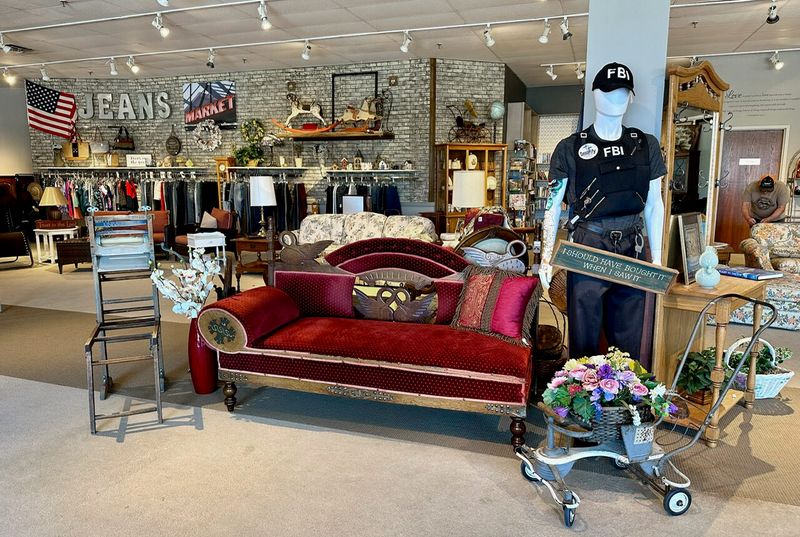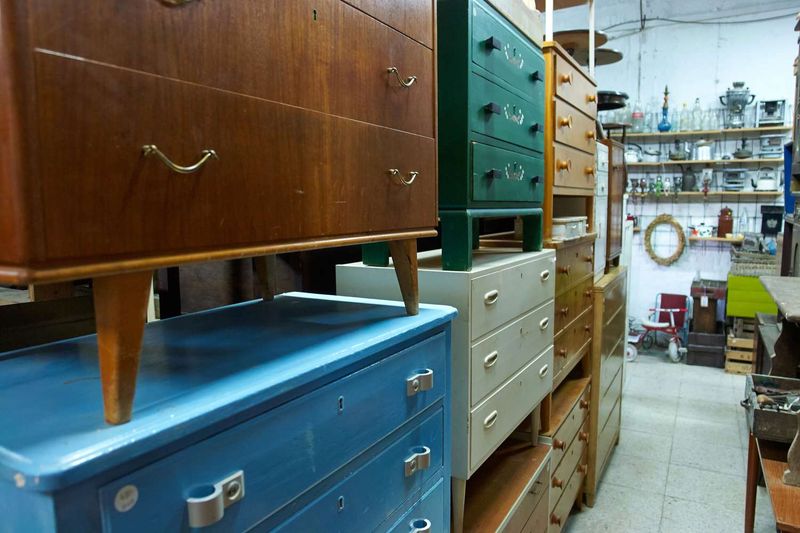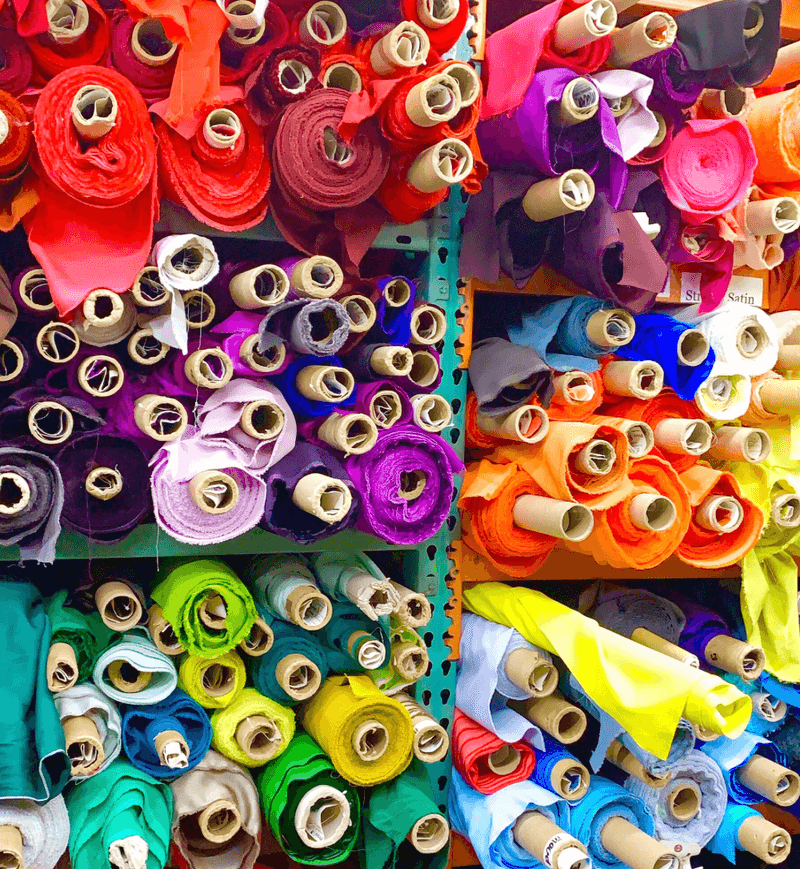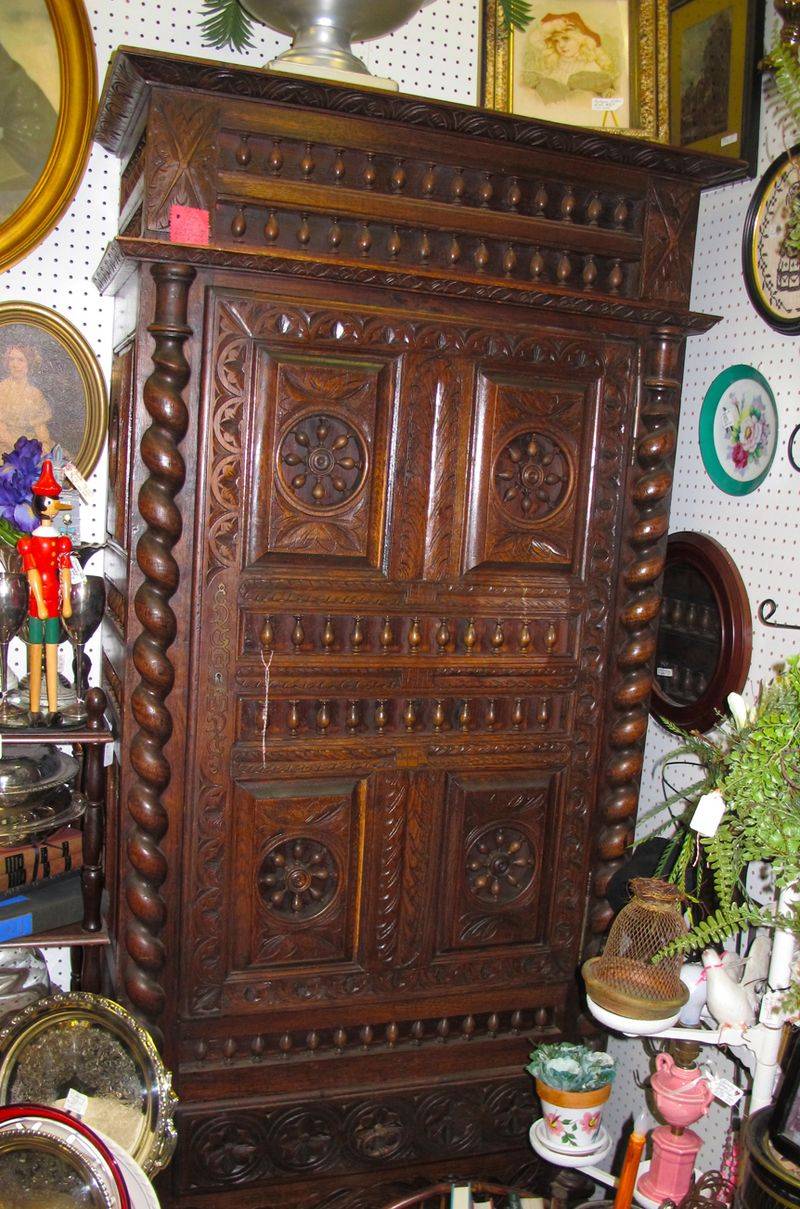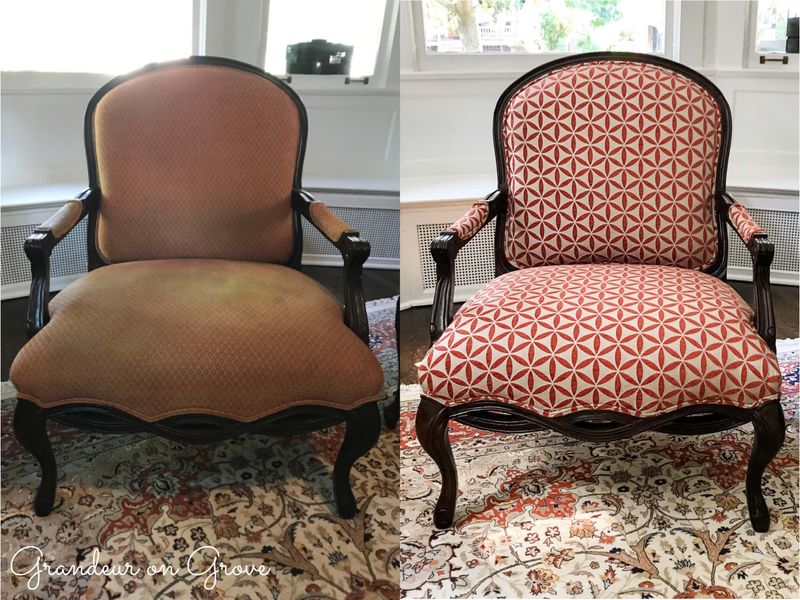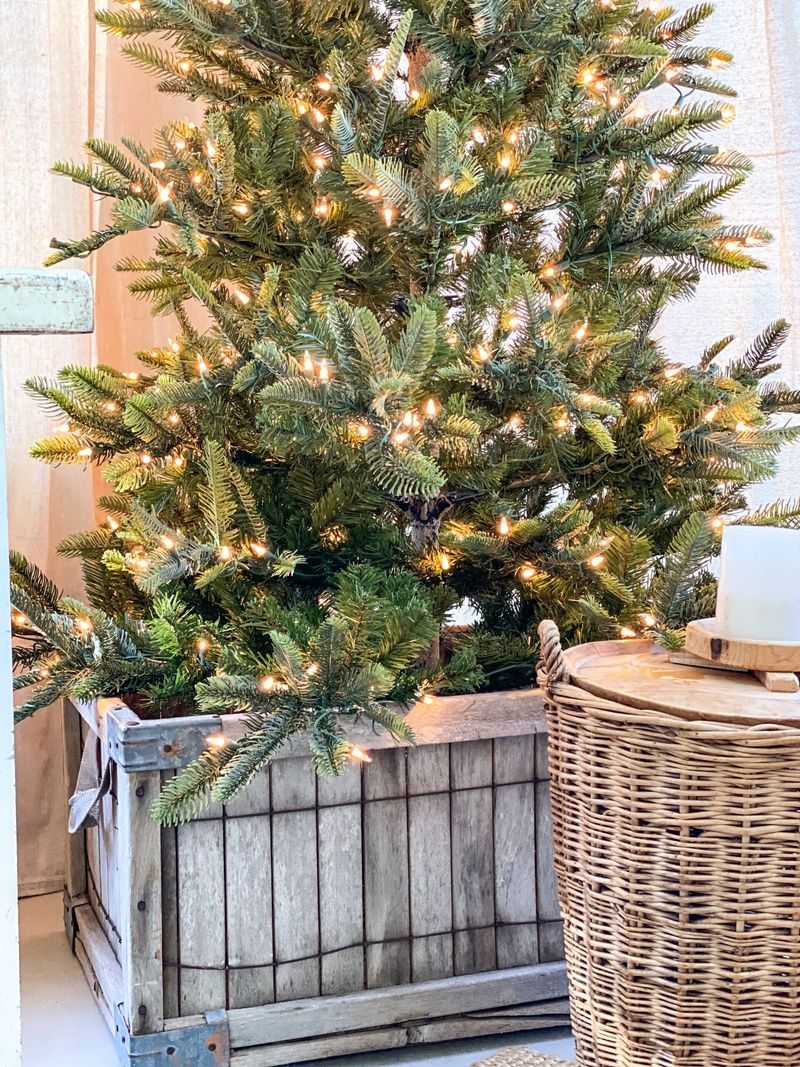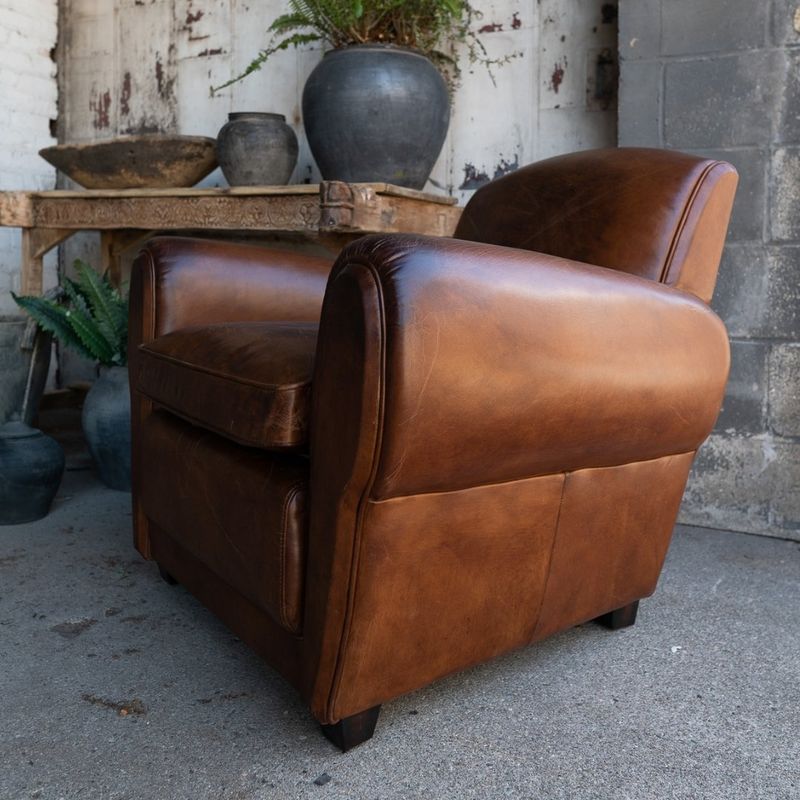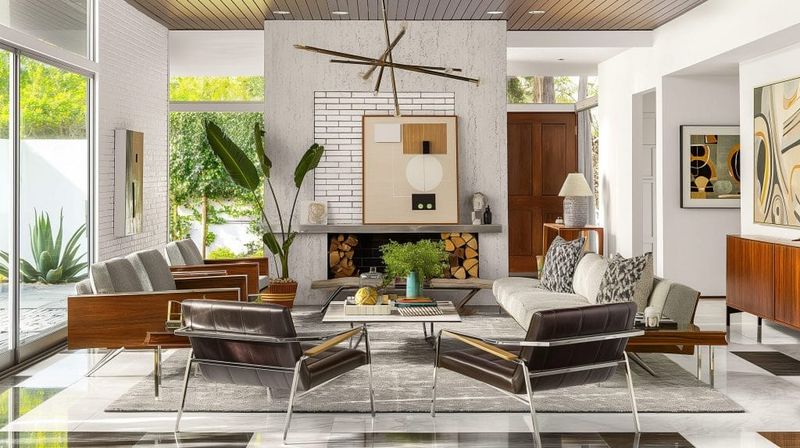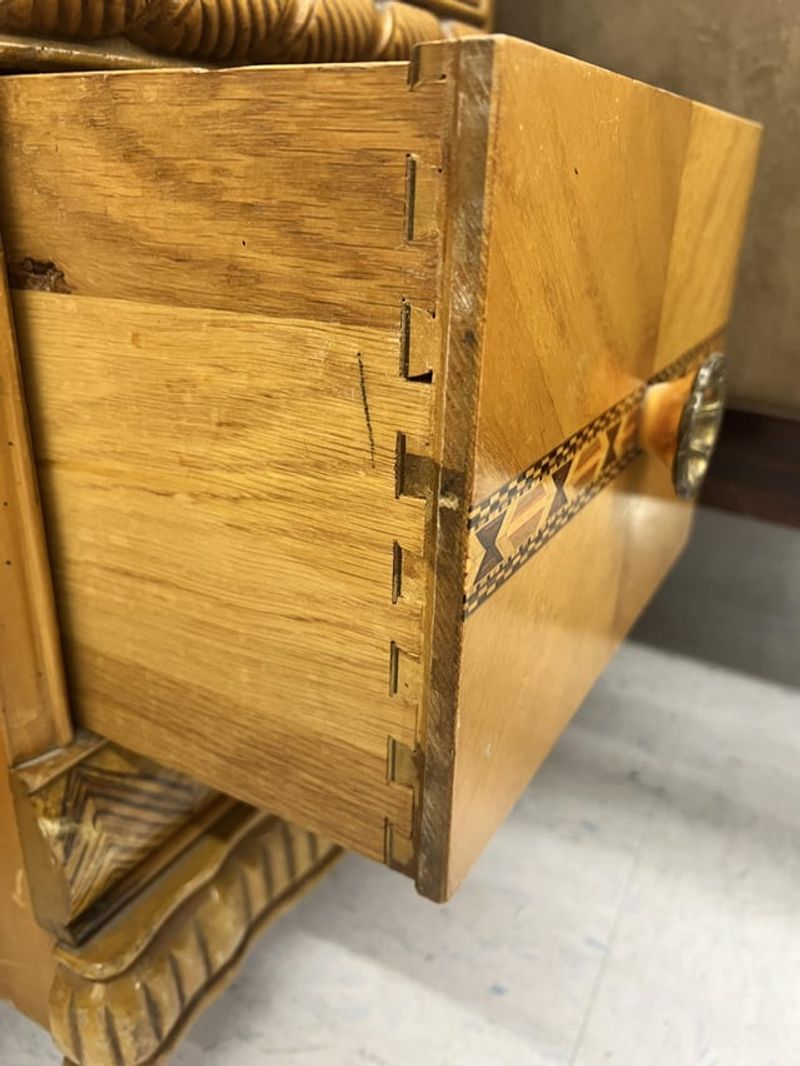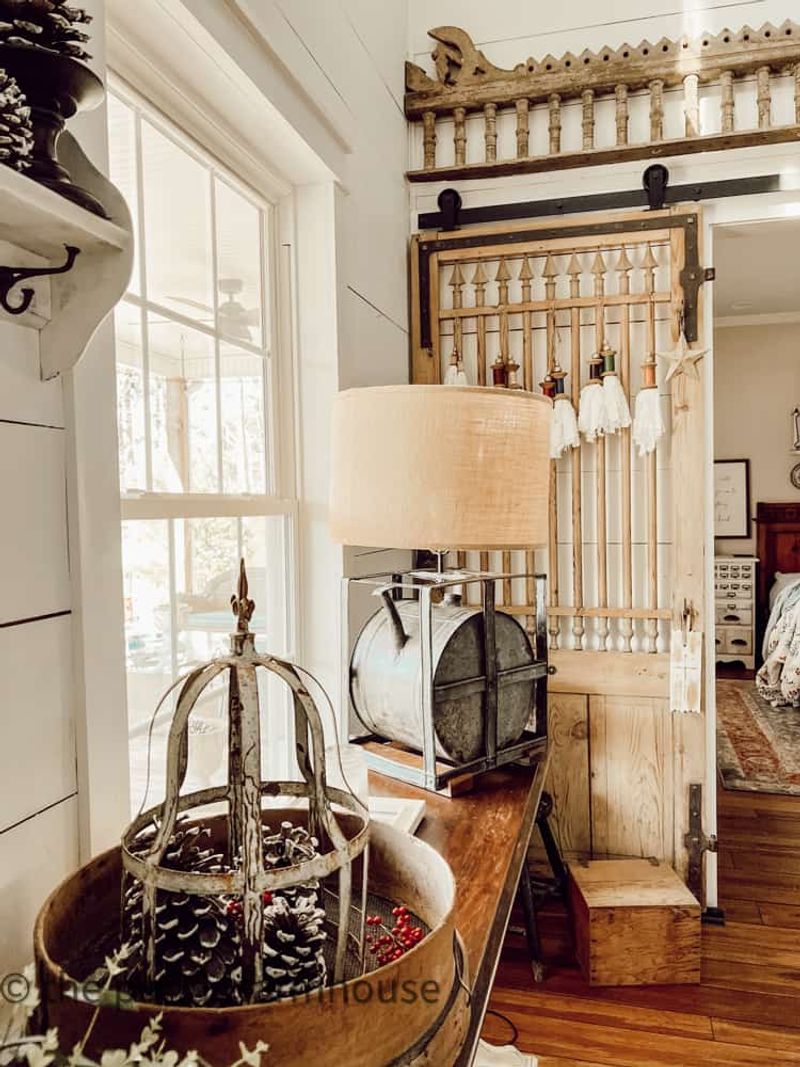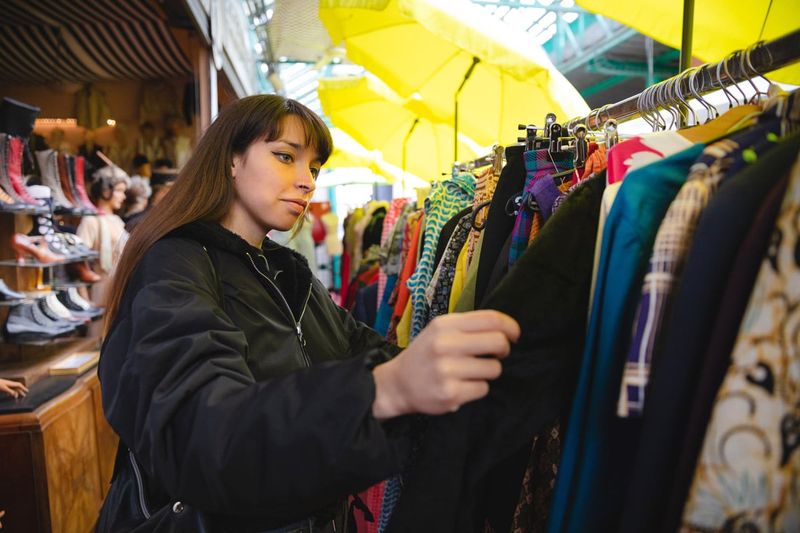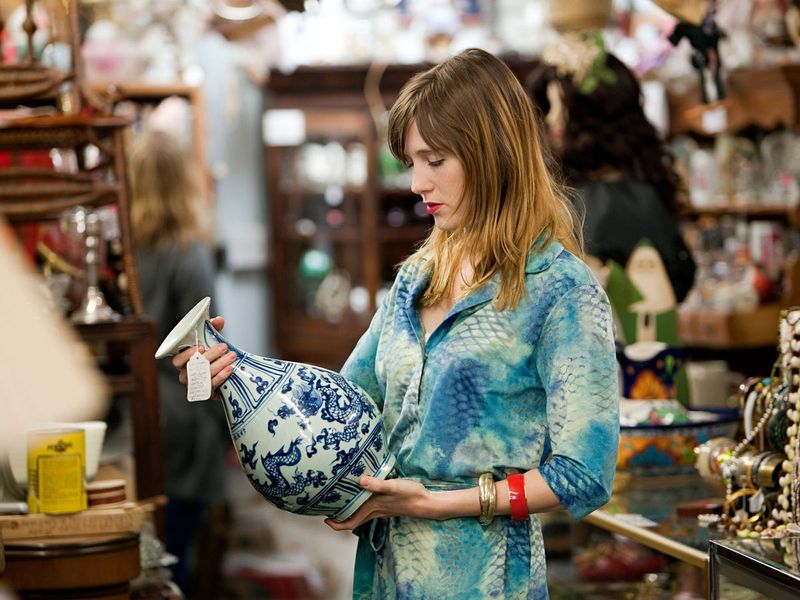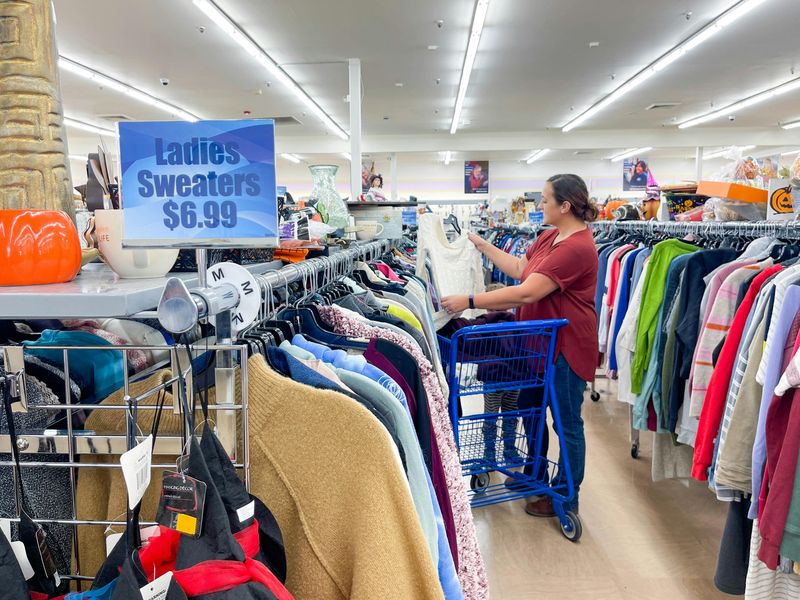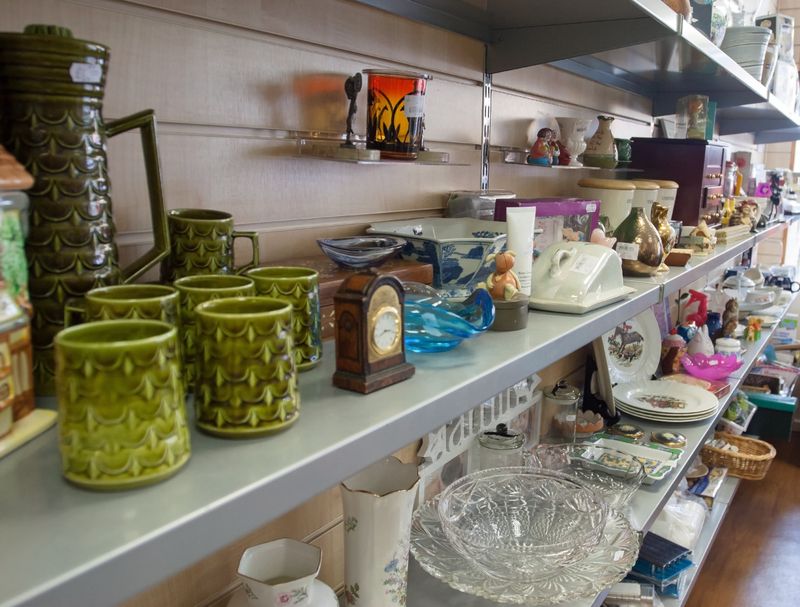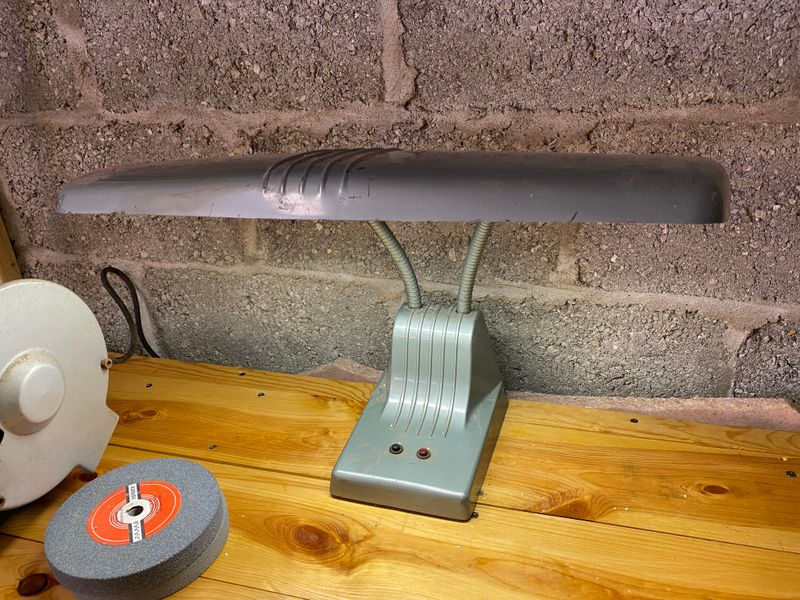Thrift stores are treasure troves of unique finds that can transform your home without breaking the bank. Design professionals have mastered the art of spotting diamonds in the rough while thrifting.
With a trained eye and some insider knowledge, you too can uncover amazing pieces that look like they belong in a high-end design magazine.
Ready to become a thrift shopping master with these 20 tips? Let’s get going!
1. Measure Your Spaces Before Shopping
Nothing crushes the thrill of finding a perfect vintage piece like realizing it won’t fit through your doorway. Smart thrifters always carry a small tape measure and know their room dimensions by heart.
Jot down measurements for key areas in your home, including doorways, stairwells, and elevator dimensions. Having a floor plan sketch in your phone can help visualize how pieces might fit.
When you find something promising, measure twice to avoid bringing home items that won’t work in your space.
2. Look Beyond Surface Imperfections
Ever spotted a dusty lamp with incredible lines but passed it up? Design pros never judge a piece by its temporary flaws. They see past the grime, scratches, or outdated hardware.
What matters most is the underlying quality and potential. A quick cleaning, fresh paint, or new knobs can completely transform an item from drab to fab.
Focus on construction quality, material, and silhouette rather than current condition. Solid wood furniture with scratches is infinitely more valuable than pristine particle board.
3. Shop With a Cohesive Color Palette
Random bargain hunting leads to chaotic interiors. Professional designers approach thrifting with specific color schemes in mind, ensuring new finds will harmonize with existing pieces.
Keep paint swatches or fabric samples in your thrift kit. These references help determine if that quirky ceramic lamp will actually complement your living room’s color story.
When you maintain color discipline, even eclectic thrifted items will look intentionally curated rather than haphazardly collected.
4. Train Your Eye for Quality Materials
Feeling the weight of items is second nature to seasoned thrifters. Heavy glass vases, solid wood furniture, and weighty ceramic pieces typically signal better quality than their lightweight counterparts.
Run your fingers along edges to detect real wood versus veneer. Look underneath furniture for manufacturer stamps that might reveal valuable heritage brands.
Natural materials like wool, cotton, leather, brass, and marble generally age better and hold more value than synthetic alternatives, making them smart investments.
5. Visit High-End Neighborhoods
Location matters tremendously when hunting for premium secondhand goods. Thrift stores in affluent areas often receive donations from wealthy residents who discard high-quality items more frequently.
Wealthy neighborhoods typically yield better furniture brands, designer clothing, and luxury housewares. Their residents tend to update decor more often, meaning barely-used items regularly hit thrift shelves.
Make a thrifting map of stores in upscale areas and visit them regularly, especially after spring cleaning season when donations peak.
6. Know When Stores Restock
Timing is everything in the thrifting game! Chatting with store employees can reveal exactly when new merchandise hits the floor, giving you first pick of fresh inventory.
Many thrift stores have specific days when they process donations and restock shelves. Some even have color-coded tag systems that indicate when items were put out.
Early weekday mornings often offer the best selection before the after-work crowd arrives. Becoming familiar with restocking schedules gives you a significant competitive advantage.
7. Learn Basic Furniture Styles
Without recognizing a mid-century modern credenza or an Art Deco lamp, you might walk past valuable finds. Design pros have trained themselves to identify different furniture periods and styles instantly.
Study up on key design movements like Bauhaus, Danish Modern, Victorian, and Hollywood Regency. Understanding distinct characteristics of each era helps spot authentic pieces worth snatching up.
Follow design accounts on social media and browse vintage furniture catalogs online to develop your style recognition skills.
8. Bring Fabric Swatches
Wonder why design pros always seem to find chairs that perfectly match their existing decor? They’re not just lucky – they come prepared with fabric swatches from their homes.
Carrying small cuttings of your curtain fabric, sofa upholstery, or wallpaper samples makes color matching infinitely easier. This simple trick ensures your thrifted finds will integrate seamlessly with your existing interior.
Digital photos of your rooms can help too, but nothing beats physical samples for accurate color and texture matching.
9. Focus on Statement Pieces
Why waste time sifting through ordinary items when you could hunt for showstoppers? Professional designers prioritize finding distinctive focal points that elevate entire rooms.
A single dramatic chandelier, oversized mirror, or sculptural chair can define your space more effectively than dozens of small trinkets. These statement pieces become conversation starters and design anchors.
Train yourself to scan quickly past the ordinary and zero in on items with unusual shapes, impressive scale, or distinctive character that can’t be found in mainstream stores.
10. Ignore Current Upholstery
Underneath that hideous 1970s floral fabric might be your dream chair! Savvy designers judge upholstered pieces solely on their bones – the frame structure and silhouette.
Check for solid construction by wiggling the frame (it shouldn’t creak) and lifting one corner (it should feel substantial). Reupholstering is surprisingly straightforward for simple pieces like dining chairs or bench seats.
Even if professional reupholstery is needed for larger items, you’ll still save significantly compared to buying new designer furniture.
11. Shop Off-Season
Hunting for Christmas decor in January might seem odd, but design professionals know this counter-intuitive approach yields amazing bargains. Thrift stores typically slash prices on seasonal items immediately after holidays.
Summer furniture appears downright affordable in November, while winter items get heavily discounted by March. This strategy requires storage space and planning ahead, but the savings are substantial.
Building a collection of high-quality seasonal decor over time allows you to create magazine-worthy holiday displays at a fraction of retail cost.
12. Look for Natural Patina
Authentic aging gives character that new items simply can’t match. Design experts specifically seek out the beautiful wear patterns on copper, brass, leather, and wood that develop naturally over decades.
Unlike damage, patina represents the appealing evolution of quality materials over time. Think leather that’s softened beautifully, copper with verdigris highlights, or wood with a rich honey color from years of gentle use.
These naturally aged surfaces add depth and soul to interiors that would otherwise feel too new or sterile.
13. Mix High and Low Pieces
Creating a curated look isn’t about filling your home exclusively with expensive items. The real secret lies in strategically combining thrifted treasures with a few carefully selected new pieces.
Professional designers might pair a thrifted vintage credenza with a brand-new sofa, or frame inexpensive thrift store art in high-quality modern frames. This high-low approach creates depth while keeping budgets reasonable.
The contrast between old and new, expensive and affordable, creates tension that makes spaces feel thoughtfully assembled rather than randomly collected.
14. Check for Quality Joinery
Flip that chair upside down! Professional designers always examine how furniture pieces are put together before purchasing. Dovetail joints, mortise and tenon connections, and dowel construction indicate quality craftsmanship worth investing in.
Avoid items held together with just staples, glue, or visible screws. These construction shortcuts typically signal mass-produced furniture that won’t stand the test of time.
Quality joinery might be hidden from casual view, but it’s the single best predictor of furniture longevity and value.
15. Reimagine Item Uses
Creativity separates amateur thrifters from design professionals. That vintage suitcase? It could become a stylish side table. Old ladder? Perfect as a blanket display.
Train yourself to see beyond an item’s original purpose. Silver trays make elegant bathroom organizers, while old shutters can transform into headboards or wall art.
This flexible thinking unlocks hidden potential in overlooked items. The most impressive thrifted interiors often feature clever repurposing that surprises and delights visitors.
16. Develop a Quick-Scan System
Racing through aisles might seem haphazard, but design pros have actually developed efficient scanning techniques. They train their peripheral vision to catch interesting shapes, colors, and textures while moving swiftly.
Instead of examining every single item, focus on quickly identifying potential candidates from a distance. Look for distinctive silhouettes, unusual materials, or quality construction signals.
This selective attention conserves your energy and time for items truly worth investigating, allowing you to cover more ground during each thrifting session.
17. Bring a Design Reference Library
Wondering if that lamp is actually valuable? Design experts maintain digital libraries of reference images on their phones to quickly verify potential finds.
Save Pinterest boards or photo albums organized by furniture styles, designers, and eras. When you spot something promising, you can instantly compare it to authenticated examples.
This mobile reference library helps identify reproductions versus originals and confirms whether prices reflect true value. It’s like having a design encyclopedia in your pocket!
18. Build Relationships With Staff
Friendly conversations with thrift store employees can transform your shopping experience! Regular shoppers who connect with staff often get tipped off about incoming treasures before they hit the floor.
Share your specific interests with workers who sort donations. Whether you collect mid-century lamps or vintage textiles, they might set aside items matching your preferences.
These relationships take time to develop but yield incredible benefits. A simple thank you note or occasional small gift can strengthen these valuable connections.
19. Look for Sets and Collections
Hunting down matching pieces creates cohesion that elevates thrifted finds from random to remarkable. Professional designers always check if that single gorgeous dining chair has siblings hiding elsewhere in the store.
Collections of similar items – whether vintage glassware, ceramic planters, or brass candlesticks – create visual impact when grouped together. Even mismatched pieces in the same color family can form striking vignettes.
Don’t hesitate to ask staff if they’ve seen matching components that might complete your set.
20. Test Electronics and Mechanics
Plugging in that vintage lamp before purchasing isn’t being fussy – it’s being smart! Design professionals always verify that mechanical elements function properly before committing.
Bring a small extension cord to test electrical items. Open and close drawers fully to check for smooth operation. Sit on chairs to ensure they’re structurally sound.
Minor repairs are often worthwhile for quality pieces, but major mechanical issues can quickly turn bargains into budget-draining projects. Better to know before you buy!

